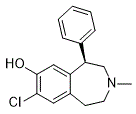Truncated Mfn2-overexpressing cells exhibit a marked enhancement of the mitochondrial membrane potential and the stimulation of ATP production in GCDCA-treated  L02 cells. In this study, we observed that the transient transfection of hMfn2602�C757 was predominantly localized in the mitochondria and co-localized with mitochondrial markers in immunofluorescence assays. These data agree with a previous study in which hMfn2602�C757 was also transiently transfected into HeLa cells, and most of the truncated protein was recruited into mitochondria to directly modulate all of the OXPHOS complexes. Furthermore, our data support additional roles for Mfn2 that extend beyond the regulation of the mitochondrial fusion in GCDCA-induced hepatotoxicity. In line with these findings, Mfn2 plays a secondary role in mitochondrial fusion in several pathophysiological conditions, including diabetes, vascular proliferative disorders, and Charcot-Marie-Tooth type 2A neuropathy. However, as the specific mechanisms involved in the effects caused by the increased activity of the truncated form of Mfn2 remain unknown, we consider two distinct alternatives. First, hMfn2602�C757 has been shown to modulate metabolism through the function of the OXPHOS system. Second, hMfn2602�C757 may affect the mitochondrial recruitment of Bax or Drp1 during cell death. The two hypotheses are not mutually exclusive, and the details of the mechanisms need further research. Taken together, our in vitro studies suggest that there may be two biological roles for Mfn2 during the progression extrahepatic cholestasis. On the one hand, Mfn2, which plays significant roles during mitochondrial dysfunction, has been implicated in the control of mitochondrial network. On the other hand, the direct effects of Mfn2 on mitochondrial metabolism do not all depend on its effects as a mitochondrial fusion protein. Specifically, Mfn2 may serve as a therapeutic target for the development of novel treatments to prevent liver Even though other proteins detected in the extracts had similar transcript levels as the Lingulodinium hist damage in patients with extrahepatic cholestasis. The NBS gene product, NBS1, is a part of the Mre11Rad50-NBS1 complex that is essential for DNA double strand break repair. NBS1 carries out its checkpoint functions through the phosphorylation by ataxia-telangiectasia mutated protein after ionizing radiation. We previously demonstrated that c-MYC, an oncoprotein, directly activates the expression of NBS1. The function of NBS1 related to proliferation is demonstrated by the phenotypes of diminished expansion of the inner cell mass of mutant blastocysts and cellular proliferation defects in Nbs1m/m mouse embryonic fibroblasts. Overexpression of NBS1 induces transformation activity through interacting with the p110 subunits of phosphoinositide 3-kinase to activate PI 3-kinase activity, indicating that NBS1 overexpression is an oncogenic event. In head and neck squamous cell carcinoma patients, increased NBS1 expression is a prognostic factor of aggressive head and neck cancer. All these results indicate that NBS1 overexpression may play an important role in tumorigenesis.
L02 cells. In this study, we observed that the transient transfection of hMfn2602�C757 was predominantly localized in the mitochondria and co-localized with mitochondrial markers in immunofluorescence assays. These data agree with a previous study in which hMfn2602�C757 was also transiently transfected into HeLa cells, and most of the truncated protein was recruited into mitochondria to directly modulate all of the OXPHOS complexes. Furthermore, our data support additional roles for Mfn2 that extend beyond the regulation of the mitochondrial fusion in GCDCA-induced hepatotoxicity. In line with these findings, Mfn2 plays a secondary role in mitochondrial fusion in several pathophysiological conditions, including diabetes, vascular proliferative disorders, and Charcot-Marie-Tooth type 2A neuropathy. However, as the specific mechanisms involved in the effects caused by the increased activity of the truncated form of Mfn2 remain unknown, we consider two distinct alternatives. First, hMfn2602�C757 has been shown to modulate metabolism through the function of the OXPHOS system. Second, hMfn2602�C757 may affect the mitochondrial recruitment of Bax or Drp1 during cell death. The two hypotheses are not mutually exclusive, and the details of the mechanisms need further research. Taken together, our in vitro studies suggest that there may be two biological roles for Mfn2 during the progression extrahepatic cholestasis. On the one hand, Mfn2, which plays significant roles during mitochondrial dysfunction, has been implicated in the control of mitochondrial network. On the other hand, the direct effects of Mfn2 on mitochondrial metabolism do not all depend on its effects as a mitochondrial fusion protein. Specifically, Mfn2 may serve as a therapeutic target for the development of novel treatments to prevent liver Even though other proteins detected in the extracts had similar transcript levels as the Lingulodinium hist damage in patients with extrahepatic cholestasis. The NBS gene product, NBS1, is a part of the Mre11Rad50-NBS1 complex that is essential for DNA double strand break repair. NBS1 carries out its checkpoint functions through the phosphorylation by ataxia-telangiectasia mutated protein after ionizing radiation. We previously demonstrated that c-MYC, an oncoprotein, directly activates the expression of NBS1. The function of NBS1 related to proliferation is demonstrated by the phenotypes of diminished expansion of the inner cell mass of mutant blastocysts and cellular proliferation defects in Nbs1m/m mouse embryonic fibroblasts. Overexpression of NBS1 induces transformation activity through interacting with the p110 subunits of phosphoinositide 3-kinase to activate PI 3-kinase activity, indicating that NBS1 overexpression is an oncogenic event. In head and neck squamous cell carcinoma patients, increased NBS1 expression is a prognostic factor of aggressive head and neck cancer. All these results indicate that NBS1 overexpression may play an important role in tumorigenesis.